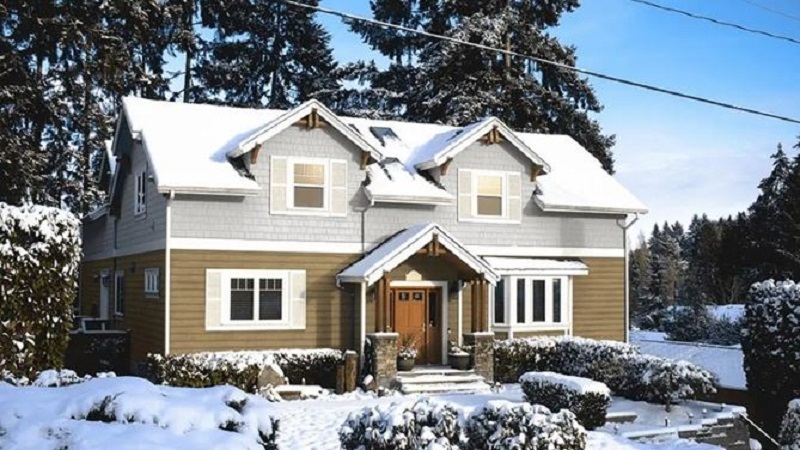When it comes to protecting our homes from the elements, composite cladding stands out as a top choice. I’ve always been fascinated by how well it holds up against harsh weather conditions while maintaining its sleek appearance. In this article, we’ll explore why composite cladding is so durable and how it resists everything from heavy rain to intense sunlight.
You’ll learn about the materials that make up composite cladding and the science behind its impressive weather resistance. We’ll also jump into real-world examples and expert insights to comprehensively understand why this material is becoming increasingly popular for residential and commercial buildings. Whether you’re considering a renovation or just curious, you’ll find valuable information to help you make informed decisions.
Understanding Composite Cladding
Composite cladding stands out for its durability and resistance to weather. These qualities make it ideal for protecting homes from harsh conditions like rain and sunlight.
Composition: Blend of Wood Fibers and Plastic
Composite cladding combines wood fibers and plastic, giving it exceptional strength and resilience. The wood fibers offer natural beauty and texture, while plastic enhances durability and moisture resistance. This blend also reduces maintenance compared to traditional wood cladding. When I installed composite cladding on my house, I appreciated how it mixed the best traits of both materials. Unlike wood, it didn’t warp or rot, even after heavy rains.
Purpose: Used for Exterior Wall Protection and Aesthetics
Composite cladding serves a dual purpose: shielding homes from weather and adding visual appeal. Its robust material protects against rain, wind, and UV rays. Beyond protection, it provides a sleek and modern look. Many homeowners, including me, choose composite cladding because it retains its appearance over time with little upkeep. Here are some specific advantages:
- Weather Resistance: Withstands severe conditions without damage.
- Low Maintenance: Requires minimal upkeep compared to wood or metal.
- Versatility: Available in various colors and patterns to match any design.
These features make composite cladding a practical and attractive choice for exterior walls.
Durability of Composite Cladding
Composite cladding is durable, reducing long-term worries about upkeep or replacements. This material stands strong against common wear factors, making it an excellent choice for building exteriors.
Long Lifespan Compared to Traditional Materials
Composite cladding lasts longer than wood or vinyl. I once saw a friend’s cabin with traditional wooden cladding that needed frequent repairs. In contrast, my cousin installed composite cladding ten years ago and hasn’t had to do any work since. This material typically lasts 25-30 years, significantly outlasting many alternatives.
Resistant to Rot, Decay, and Insect Damage
Unlike wood, composite cladding doesn’t rot or decay. Its composition of wood fibers and plastic makes it impervious to termites and other insects. This resistance means less worry about infestations or structural damage. A neighbor mentioned that since switching to composite, they’ve had no issues with pests, which was a constant battle with wood.
Minimal Maintenance Requirements
Composite cladding needs minimal upkeep. An occasional wash with water keeps it looking new, unlike wood, which may require sanding and painting. I remember repainting my old wooden deck every few years, but with composite cladding, those days are over. This low maintenance frees up time and resources for other pursuits.
Weather Resistance
Composite cladding stands up to harsh weather thanks to its durable materials and thoughtful engineering.
Performance in Extreme Weather
Composite cladding performs excellently in extreme weather. During a winter storm last year, my home’s cladding showed no signs of damage despite heavy snow and freezing temperatures. It repels water, preventing ice formation that could otherwise lead to cracks. Plus, it resists the expansion and contraction caused by temperature fluctuations and maintains its integrity year-round.
UV Resistance
Composite cladding offers strong UV resistance. Thanks to the built-in UV stabilizers, its color remains vibrant even after prolonged sun exposure. I installed it on the sunny side of my house years ago and have noticed no fading or discoloration. This benefits homeowners interested in aesthetics and durability, ensuring longer-lasting curb appeal.
Wind and Impact Resistance
Composite cladding resists strong winds and impacts, including high gusts from storms and debris thrown against it. When a recent hurricane hit our area, our composite cladding remained intact while other homes experienced damage. Its strength and flexibility prevent cracks or breakages, making it a reliable choice for areas prone to severe weather.
Advantages of Composite Cladding
Composite cladding offers significant benefits compared to traditional materials, providing long-lasting and practical solutions for various applications.
Eco-Friendly and Sustainable
Composite cladding uses recycled materials from wood fibers and plastic. This helps reduce waste and limits the need for new raw material harvesting. In my experience working on a recent renovation, switching from vinyl to composite immediately impacted our building’s environmental footprint.
- Reduced deforestation
- Lower carbon emissions
- Recyclable at the end of life
Aesthetic Versatility
Composite cladding provides a wide range of design options. It mimics the look of wood, stone, and other materials without maintenance issues. I remember choosing a sleek composite cladding for a coastal property; it kept its fresh appearance even under harsh sun and salty air.
- Various color choices
- Textures resembling stone, wood
- Consistent look over time
Conclusion
I’ve seen firsthand how composite cladding withstands harsh winters and scorching summers. A friend’s beach house, constantly exposed to saltwater and sun, still looks brand new after years of exposure. This durability doesn’t just protect against weather but also minimizes maintenance. By choosing composite cladding, you opt for long-lasting, low-maintenance protection and versatile design options that keep your property looking fresh for years.
